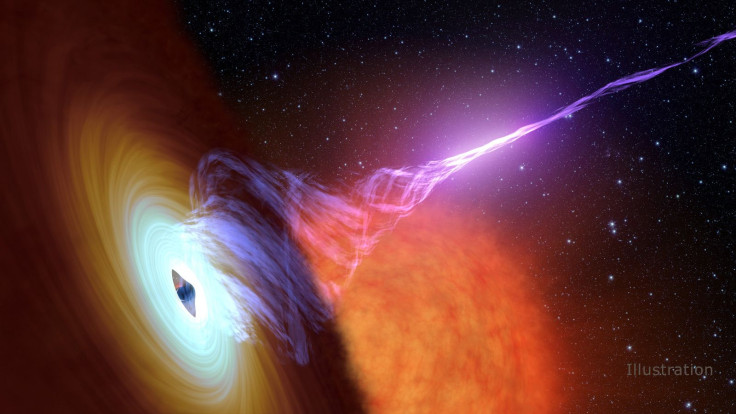Central Supermassive Black Holes’ Mass Controls Star Formation In Massive Galaxies

The mass of a supermassive black hole sitting at the center of a massive galaxy is responsible for when the galaxy stops forming new stars, a new study has found. This could explain why young galaxies are a hotbed of star formation, and why that process slows down and eventually stops completely as the galaxy evolves.
The presence of a supermassive black hole at galactic center is mostly inferred by the gravitational effect it has on the galaxy’s stars. Sometimes, however, it can also be observed by looking at the energetic radiation from the active galactic nucleus. Simply put, the energy radiating from the AGN could be responsible for heating and dissipating the gas that would have otherwise cooled and condensed into stars.
In case you are wondering what exactly an AGN is, it is the compact region at the center of a galaxy from where the intensity of radiation across much of the electromagnetic spectrum is much higher than the rest of the galaxy. This radiation is thought to be produced when the supermassive black hole in the galaxy’s center stars to accrete matter.
The idea of an AGN disrupting the formation of new stars is new, in of itself. But the theory had been lacking any observational evidence, evidence that Ignacio Martín-Navarro — a postdoctoral researchers at the University of California, Santa Cruz — and his colleagues behind the new study say they have.
The study looked at massive galaxies the mass of whose central black holes was already known, established by analyzing the motions of stars near the galactic center. The history of star formation in those galaxies was looked at by the researchers, by analyzing the spectra from those galaxies. Differently aged populations of stars show different data on the spectrograph.
“For galaxies with the same mass of stars but different black hole mass in the center, those galaxies with bigger black holes were quenched earlier and faster than those with smaller black holes. So star formation lasted longer in those galaxies with smaller central black holes,” Martín-Navarro said in a statement Monday.
The only factor that seemed to have a role to play was the mass of the black holes, with the size, composition or other properties of the galaxies themselves not being important.
“We used black hole mass as a proxy for the energy put into the galaxy by the AGN, because accretion onto more massive black holes leads to more energetic feedback from active galactic nuclei, which would quench star formation faster,” Martín-Navarro explained.
AGN could be used a proxy because they are highly variable in general, with their properties depending on the black hole’s size and the rate at which it is accreting matter, among other factors.
Jean Brodie, professor of astronomy and astrophysics at UC Santa Cruz and a coauthor of the paper, said in the statement: “This is the first direct observational evidence where we can see the effect of the black hole on the star formation history of the galaxy.”
Any model seeking to explain the evolution of galaxies needs to account for the feedback from the supermassive black hole at the center. And even the recent observations don’t provide a complete picture of exactly how this feedback quenches the formation of stars, a fact the researchers are well aware of.
Aaron Romanowsky, an astronomer at San Jose State University, said in the statement: “There are different ways a black hole can put energy out into the galaxy, and theorists have all kinds of ideas about how quenching happens, but there’s more work to be done to fit these new observations into the models.”
The research also involved scientists from other universities in the United States and Europe, and was published Monday in the journal Nature.
© Copyright IBTimes 2024. All rights reserved.



















